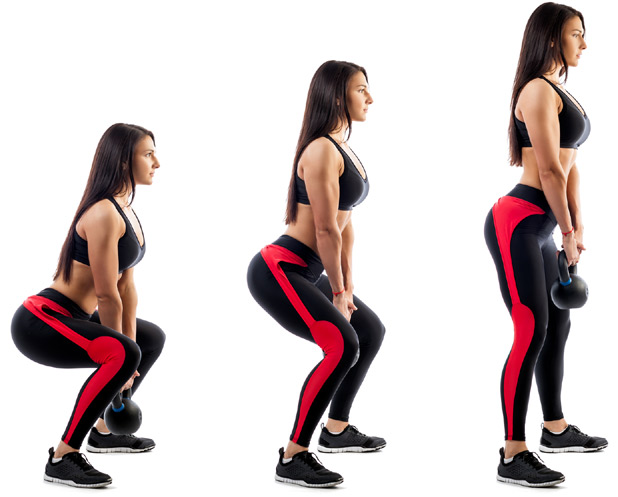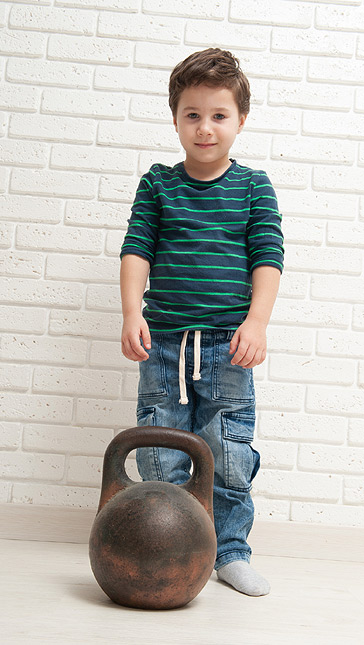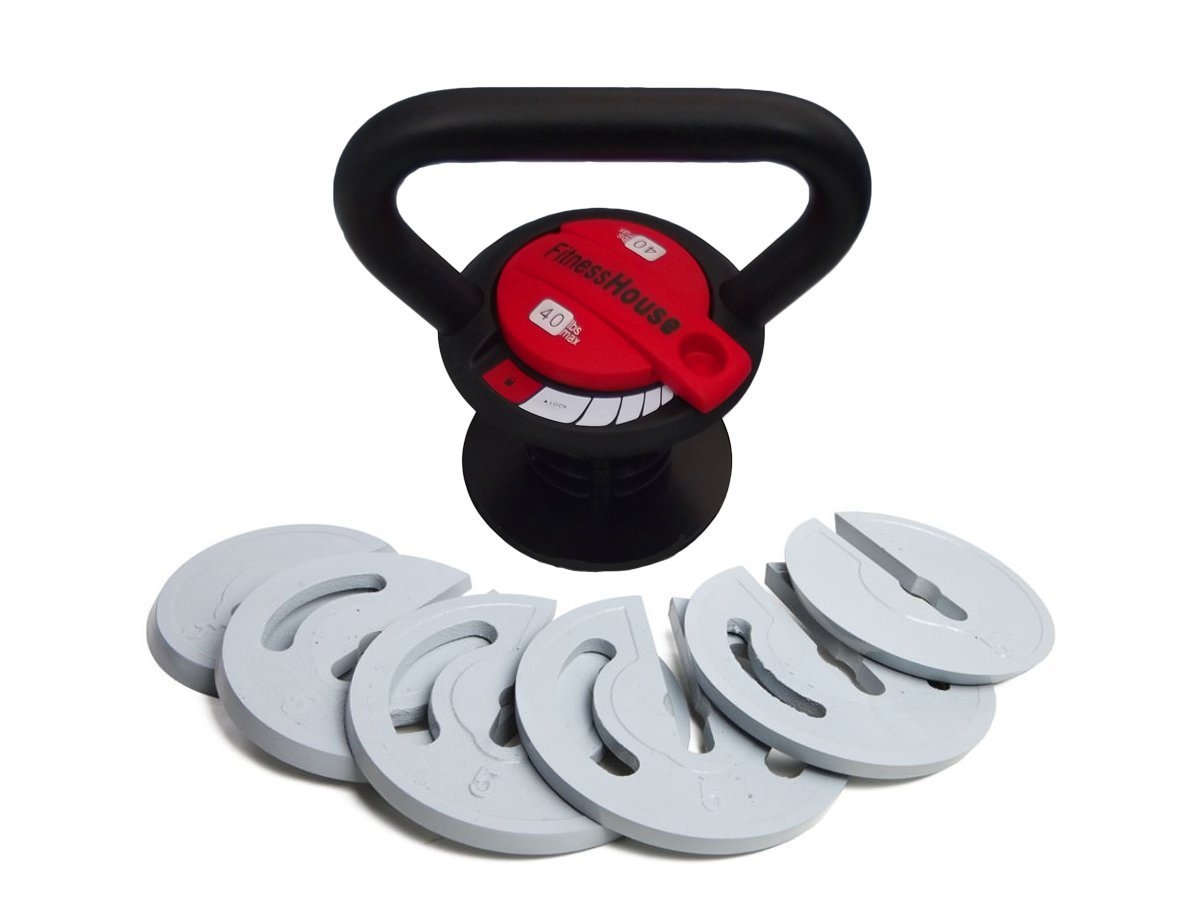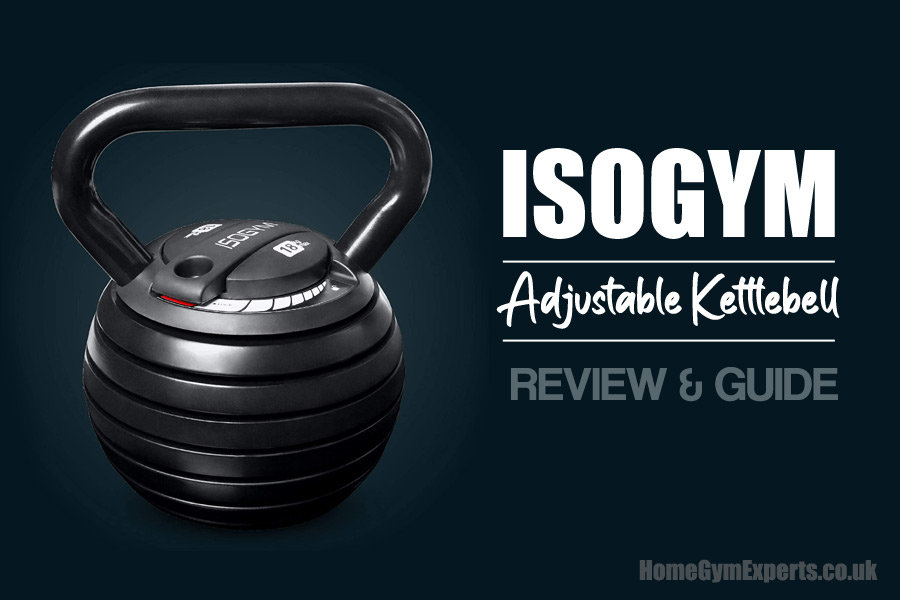While the last thing you’ll likely want to do when your lovely new kettlebell arrives is learn about how to use it safely, don’t skip this guide. With a few simple tips and tricks under your weight-lifting belt, you can avoid some injuries from a stubbed toe to… well, a lot worse.
Let’s be real here; we’re chucking a cannonball around here and there’s a lot that can go wrong.
Why are kettlebells so popular?
We’re big fans of the humble Kettlebells here on HGE. From adjustable gadgets, to the old-school hardcore kind. They’ve been a popular item because they are relatively inexpensive and they do not take up too much space. However, they are a serious piece of equipment that can cause injury to people and damage to property.
In this post, we are going to share our top five tips for safely training with kettlebells.
Tip #1: Sort your form out!
Improper form can cause muscle strain and painful injuries, so invest some time in learning about technique before you jump into things. Start with your legs more than hip-width apart. Reach down for the kettlebell, bending at the knees and pushing your bum back.
Remember, you are not performing a squat, so do not push yourself back too much. With your core tight and your eyes locked on the ground, pull the kettlebell back through your legs maintaining a firm grip as you do so. Keep the bell high as you swing back.
Practice this motion and get comfortable with it before moving on to the upwards swing.
Tip #2 – With the kettlebell swing, correct form is everything!
Swinging forward is all in the stand. Keeping your core tight as the kettlebell passes back through your legs, stand up as hard and as straight as possible. Concentrate on locking your knees and squeezing your legs and glutes.
This should create the swing momentum. The swing should be straight and your eyes should be on the kettlebell at all times.
On the downwards swing, it is crucial not to drive the kettlebell with your arms; allow it to come down under its own force until it comes back under your torso, at which point you repeat for the desired number of swings. Kettlebell training is all about your core and your glutes, keep them tight throughout.
Tip #3 – Master your kettlebell grips and holds

Wear grip gloves if you have naturally sweaty hands or use talcum powder as necessary. Don’t train in cramped spaces and don’t allow anyone to stand in front of you. Be cautious about lifting a weight that is too heavy for you, as this increases the risk of losing control.
And, if you can, train outside on your lawn. A dent in the grass is much better than a broken £600 TV!
Tip #4 – Which kettlebell weight to buy
Kettlebell training engages multiple muscle groups at once, so when choosing a weight you want to go for one that challenges you within this framework. Picking something too light can cause damage because it interferes with proper form – people often end up driving down the kettlebell instead of allowing it to freefall.
To discover what weight is suitable for your ability, try performing a deadlift and go for something that is more challenging than you can handle. It is generally recommended that women start with an 8kg weight and men with a 12kg weight, rising to 12kg and 16kg respectively if the person has weight training experience.
Tip #5 – Kettlebell safety considerations when you have kids
Kettlebells pose a serious danger to kids who attempt to lift them. You can understand the appeal, in their mind kettlebells are something that helps people get big and strong, so naturally, they are going to want to try lifting them.
For very small children, the risk is actually lower because they will not be able to lift the weight. The risk is much higher for older children, say 7+, who might be able to lift the weight off the ground but cannot keep a hold of it. If they drop it onto their foot (or the foot of a sibling stood close by) they will be in pain.

The best way to handle this situation is to explain the danger to your child, if they are still interested in them and you worry that they will try to use them when your back is turned, involve them in your workout by getting some very light weights and teaching your child the proper way to use them.
Okay, this might disrupt the flow of your workout a bit, but it will protect your child and it could sow the seeds of a love for working out. In 10 years’ time, you could be training together and they might even be giving you a few tips!
Most common things that go wrong when lifting kettlebells
Here are some of the most common things that can go wrong in kettlebell training:
Muscle failure leading to dropping the kettlebell
Lifting kettlebells offer a different kind of strength training to get a good pump on, but you’re still using your muscles. Each rep will move you closer to muscles becoming tired to the point they won’t be able to complete the movement. While this isn’t a huge problem with a bicep curl, it is when you’ve hoisted a 32kg ball of iron over your head.
Letting go of the handle during a swing
Those big, chunky kettlebell handles look the part but they don’t offer much in the way of grip. And as your hand gets tired, or sweaty – or both, I’ve seen people lose their handhold at the worst time.
Just like a 17th-century battle scene, the cannonballs fly. Except it’s an 80″ TV that takes the impact instead of a castle wall. You can get around this by using chalk, working on your grip strength, or picking a kettlebell with a bit of a grip to it, or a thinner handle.
Tripping over a kettlebell hurts more than you’d think
There’s something about those massive balls of iron that makes them so painful and awkward if you bump into them. This one is really down to good discipline and putting it back to the side of your gym or home workout space when you’re done. There’s some pretty good kettlebell stands now, although it’s likely only worth it if you’ve got a few.
Head vs. kettlebell
A friend of mine was doing sit-ups and managed to conk his head of a kettlebell. Suffice to say, between head and kettlebell, he came off worse. This one is tricky when you’re doing a HIIT workout with different sets, in a limited space but do your noggin a favour and move your kettlebell to the side.
Like a wreckin’ ball
If you don’t want to unleash the destructive force of the kettlebell in your gym or home, make sure you’ve got your feet planted somewhere secure. If you’ve got a polished floor, be careful you’re not going to skid about. If you’re doing swings, definitely keep your feet a good width apart and don’t have your gym clock behind you.
Are kettlebells dangerous?
No. But they do require a bit of respect and caution each time you pick them up. As long as you’re mindful, don’t overdo it until you’re really comfortable with them and make sure you have plenty of space, you’ll be completely injury-free. The main thing is to work within your limits and use the right weight. Kettlebells are a fantastic, safe form of exercise once you know how to use them.
References & Further Reading
- Bridgewater University – American Kettlebell Swing and the Risk of Lumbar
Spine Injury (pdf) - Study finds little increased risk of injury in high-intensity functional training program
- PubMed – Does over training exist?
- Science Daily – Extended rest between weight-lifting sets could help muscle growth
- HSS – Preventing Injuries While Working Out at Home
- Harvard has some great tips on avoiding common injuries when you’re working out at home







